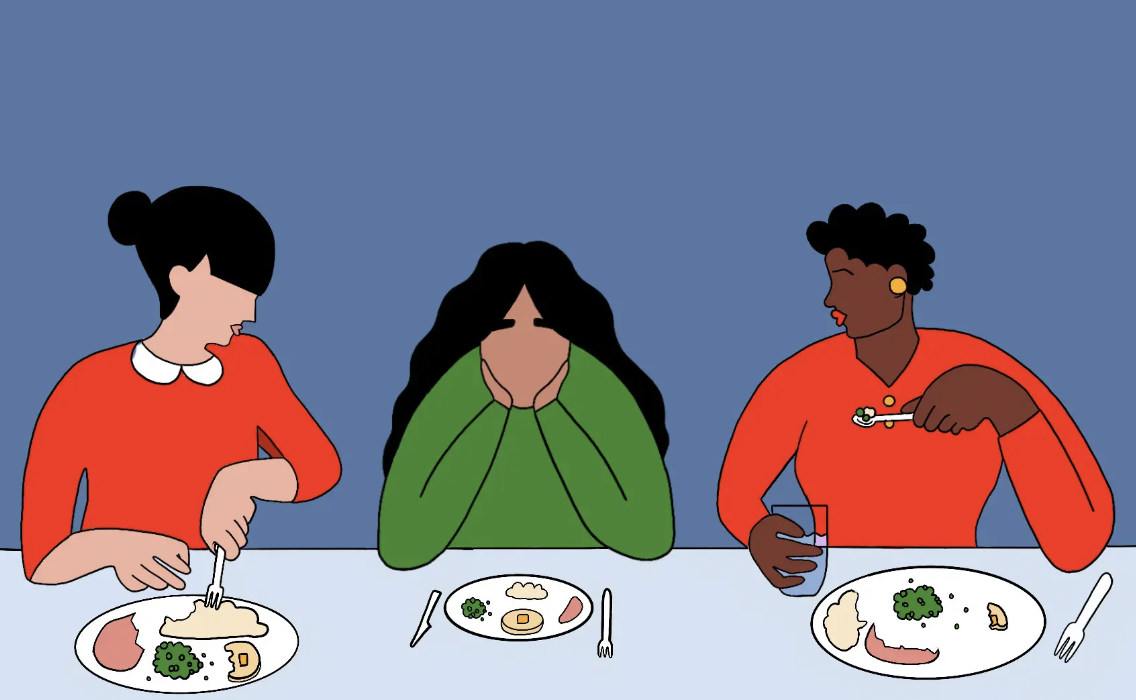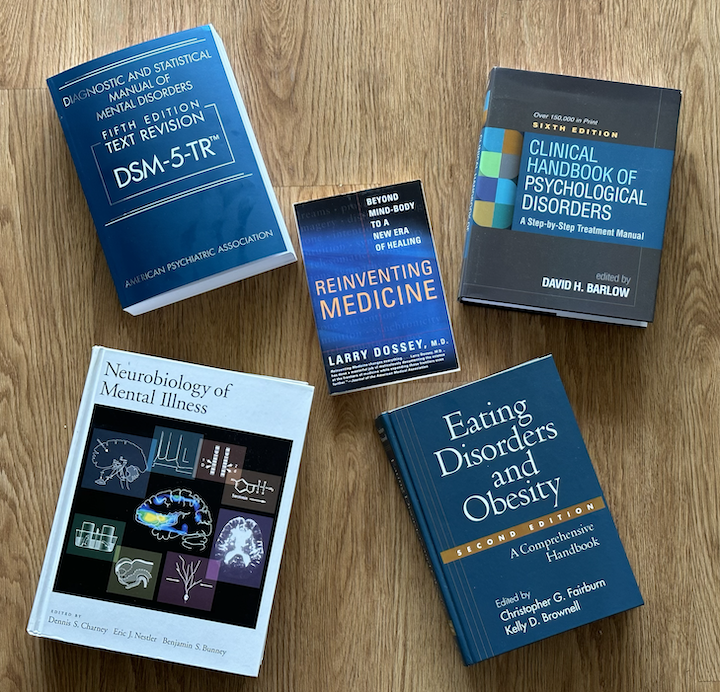PUBLISHED OCTOBER 13, 2023
Hanna Young is Doctoral Student in Clinical Psychology and the Assistant Director of the Archive of Healing. She completed her undergraduate education at UCLA, where Dr. David Shorter, the Archive’s Director, was one of her primary mentors. Hanna completed her Master’s of Science in Clinical Psychiatric Social Work at Columbia University. Hanna is currently earning her Ph.D. in Clinical Psychology at Palo Alto University of Biobehavioral Sciences. In her clinical fieldwork, Hanna provided psychotherapy to individuals and families with varied psychiatric diagnoses, at both outpatient and inpatient levels of psychiatric care. Her clinical and research work is focused on psychotic spectrum illnesses, furthering multicultural understandings of mental health and developing culturally sensitive care, and working to remove race and socioeconomic barriers to care; linguistic strategies for healing in the context of colonialism and self concept; the high degrees of empathy demonstrated by people living with psychiatric health conditions; and the racialization of substance use and the healing benefits of psychedelic substances. Her largest research project to date attends to community marginalization, food insecurity, and manifestations of eating disorder pathologies. Through storytelling and ethnographic methods, her work highlights the racial, religious, and class-based factors that interfere with diagnosing eating disorders and personalizing healing interventions.
Eating Disorders in Marginalized Communities
Although they have the highest mortality rate of all mental health disorders, eating disorders are particularly misunderstood. Eating disorders contradict typical human existence; they go against most biological survival instincts. Eating disorders are widely misunderstood because anorexia nervosa often takes the spotlight. Anorexia is the most globally recognized and accepted eating disorder. Binge-eating disorder and bulimia nervosa, on the other hand, are less seriously regarded. They are often reduced to “excuses to over eat,” lack of willpower, or “gross” habits. The spreading of misinformation perpetuates incorrect understandings of eating disorders.
Recognizing the variety of eating disorder presentations is critically important, both between different, and within individual eating disorder diagnoses. Two individuals who have the same eating disorder diagnosis will differ in a number of ways, no matter how similar their life circumstances. For example: the reason(s) the disorder manifested; when the disorder manifested; how the disorder affects them and impairs their functioning; and personal idiosyncrasies, like what foods that individuals have discomfort with or the areas individuals are most self-conscious about. Yes, there will be symptomatic overlap. However, the differences, the individual-specific nuances, will better inform personal treatment plans.
It seems like a no-brainer to know that eating disorders can affect everyone. Yet, eating disorders are most commonly thought of as disorders of affluence. The eating disorder trope we are all probably familiar with is affluent white girls, probably in their teens, pondering the latest diet fads and pinching, poking, and prodding at their stomachs or excess skin anywhere on their bodies immediately come to mind. This stereotype comes nowhere close to encapsulating the multitude of subtleties that manifest in eating disorders. Eating disorders develop for a host of reasons, and that vanity and appearance are not the primary cause of eating disorder development. When positioned as a disorder of privilege, marginalized communities are at risk of not being diagnosed with an eating disorder. As a result, marginalized individuals often go without proper support.

Figure 1: Illustration by Cristobella Durrette
Race-related disparities in eating disorder care favoring white people are well-known. However, these disparities remain largely unaddressed because the efforts to resolve them are not informed. Ethnic minorities have significantly lower rates of utilizing mental and physical health services. In some ways, eating disorders can be understood as internalization of external oppression. The interpersonal, societal marginalization minority communities experience can lead to internalized marginalization. That internalization might then manifest as an eating disorder. Although the connection is clear, eating disorder treatments are generally not accessible to or viable for individuals from marginalized communities.
When both minority and white participants present comparable symptoms, clinicians are more likely to refer and encourage white people to seek additional assessment and higher levels of care than minority individuals, even when the minority individuals demonstrate symptoms considered more clinically severe (Becker, Franco, and Speck, et. al, 211; 2003). The inability and hesitancy to diagnose minority patients seems to be rooted in the fact that eating disorders are often wrongly posited as disorders of affluence. Because of this bias, clinical models of eating disorders are largely based on white people. General mental health and distinct eating disorder practitioner training programs and eating disorder treatment programs need revision so that they are more accessible, and culturally aware and equitable.
Without adequate mental healthcare or, at the very least, consultations, marginalized community members are further stripped of personal agency and more vulnerable to negative and inaccurate stereotyping. Pre-existing marginalization is made even more severe when people are forced to prioritize sectors of well-being. Financial, physical, emotional, educational, and social stabilities should not have to be compartmentalized or prioritized: everyone is entitled to each, and each is critical to leading a life that is, at the bare minimum, comfortable and meaningful.

Figure 2: Relevant Clinical Texts
We know that eating disorders are experienced differently by different people. When a practitioner fails to address the multitude of experiences that contributed to individual disorder manifestation itself, the specific and personal nuances critical to supporting a person in recovery are lost. Prospective treatment practices must be founded on community and individual-informed opinions and avoid impersonal, prescribed actions. Attending to the person experiencing the disorder is much more productive than attending to the disorder itself. In reality, successful treatment is not generalizable. Successful treatment attends to and considers personal experiences, circumstances, emotional stamina, discharge support, and readiness to begin.
Healing from an eating disorder is significantly impeded by clinician biases when making clinical decisions, as well as larger cultural insensitivities and prejudices. Without eradicating these biases, minority communities will continue to be underserved. Treatment needs to become more accessible, continuous, and unconditional.
Suggested Readings.
Becker, A. E., Franko, D. L., Speck, A., & Herzog, D. B. (2003). Ethnicity and differential access to care for eating disorder symptoms. The International Journal of Eating Disorders, 33(2), 205–212. https://doi.org/10.1002/eat.10129
Duke Scholars (2018). Food Insecurity and Disordered Eating. Duke Health. https://eatingdisorders.dukehealth.org/education/resources/food-insecurity-and-disordered-eating
Marginalized Voices. (2018, February 20). National Eating Disorders Association. https://www.nationaleatingdisorders.org/marginalized-voices-0
Yosso, Tara J. (2005). Whose culture has capital? A critical race theory discussion of community cultural wealth. Race Ethnicity and Education, 8:1, 69-91, https://doi.org/10.1080/1361332052000341006